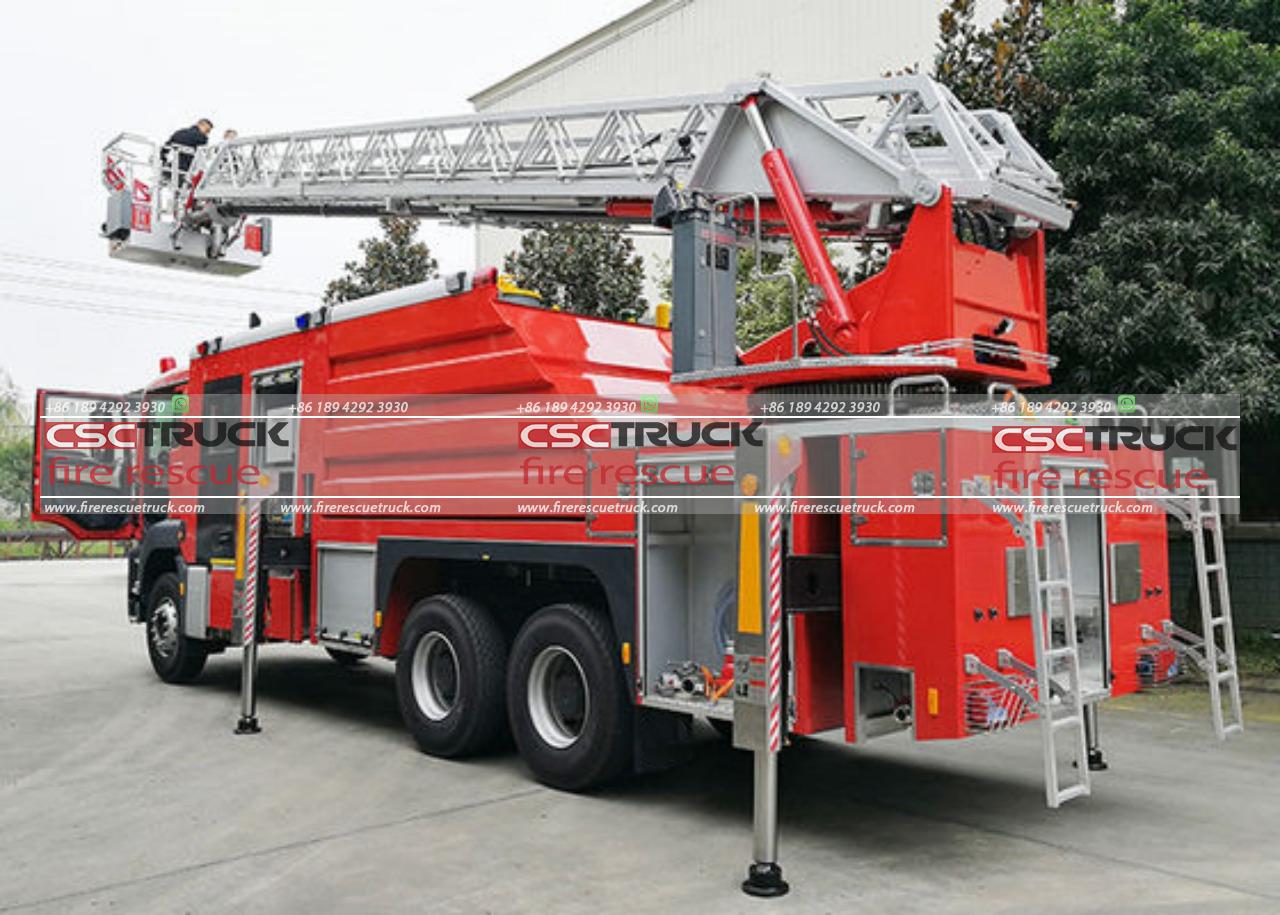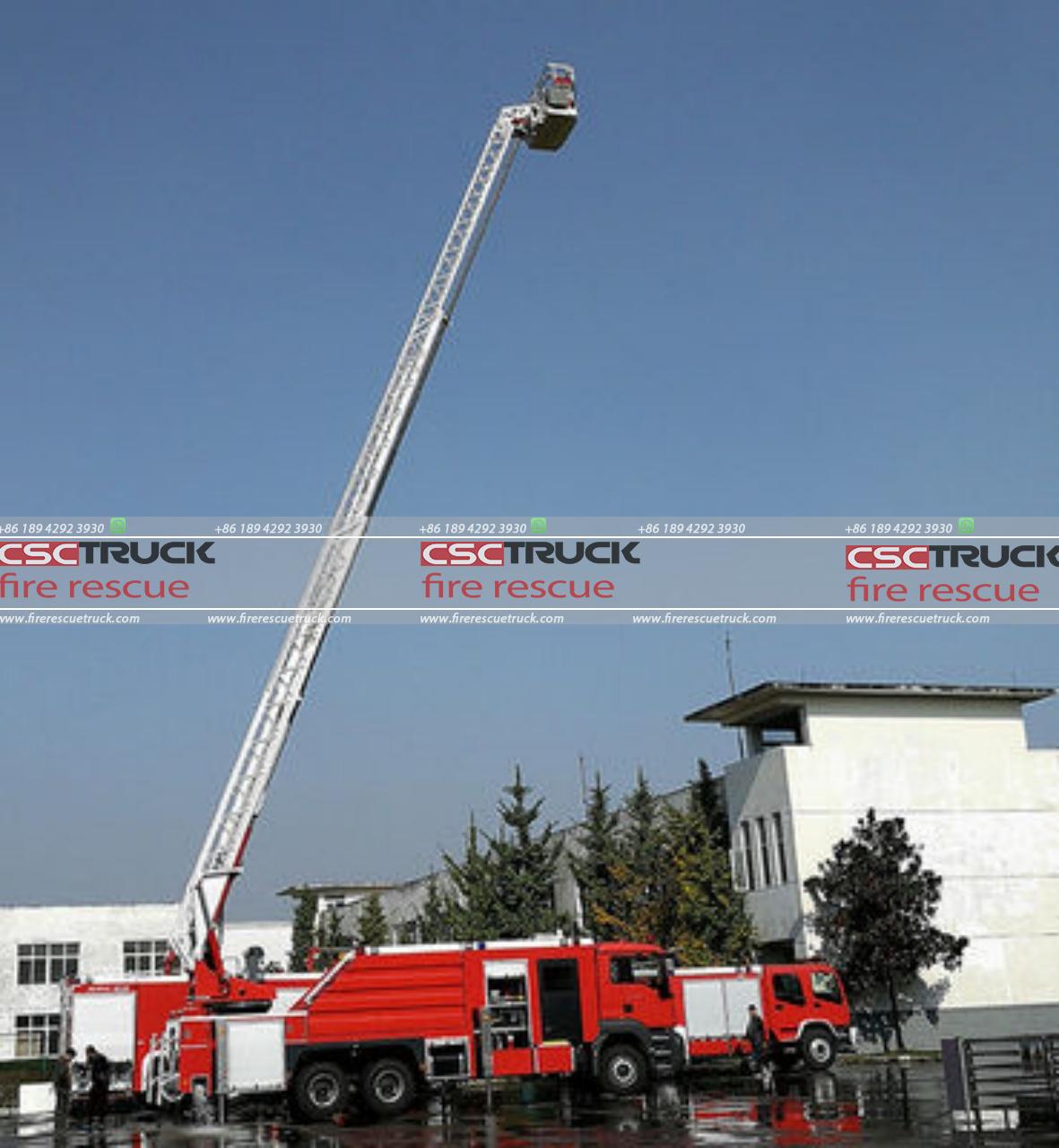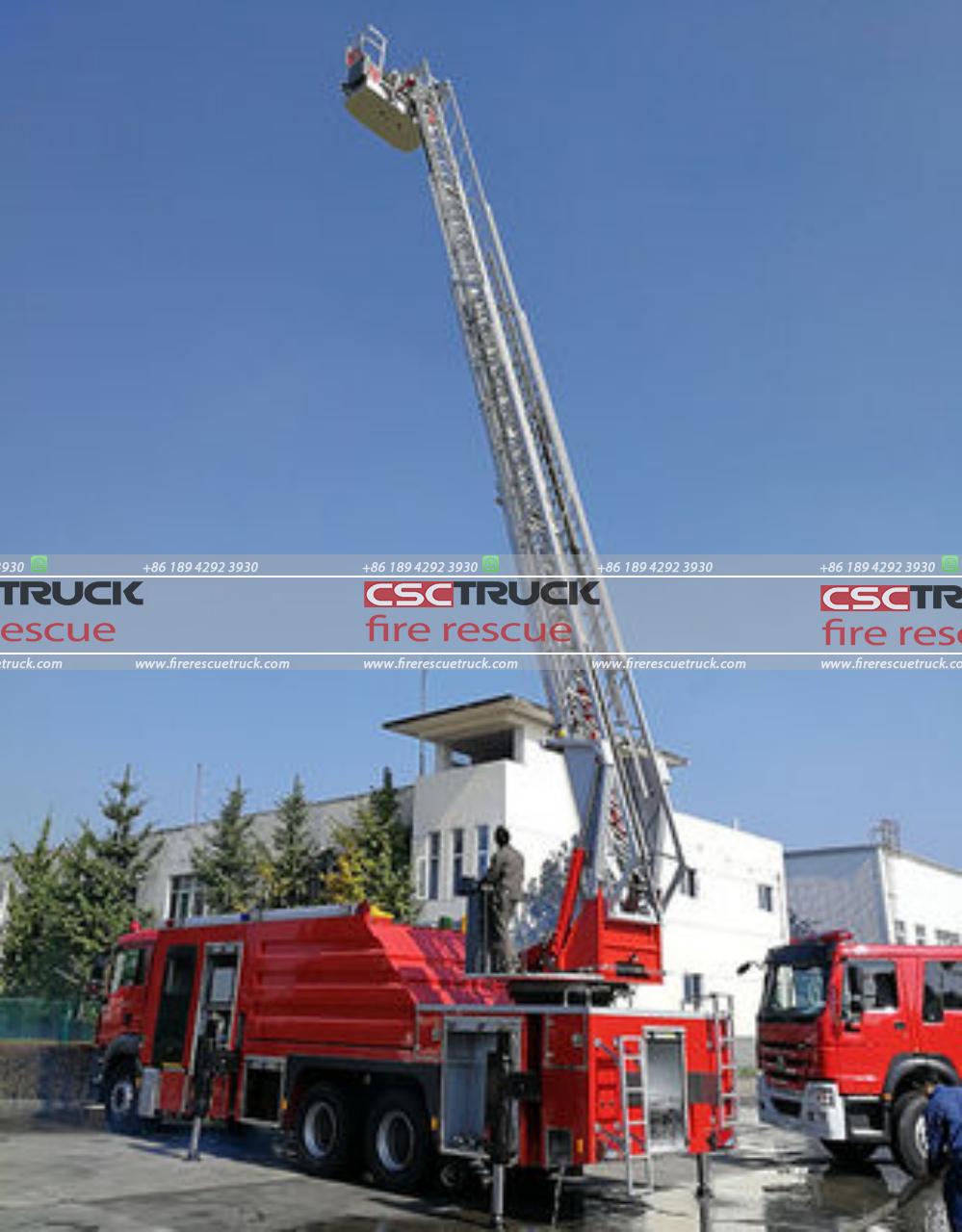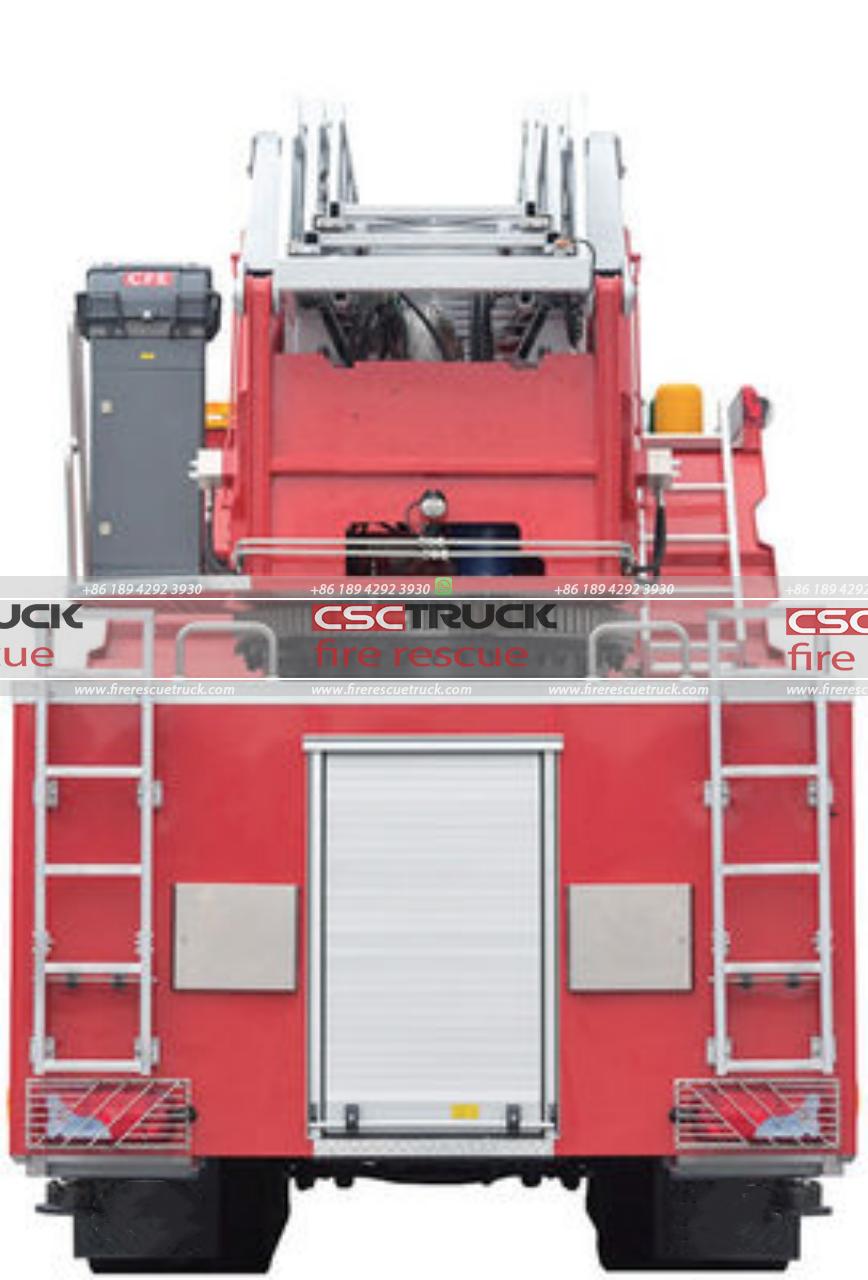What is a Truck Ladder? A Comprehensive Guide
When it comes to specialized vehicles, few are as universally recognized and symbolically significant as a ladder truck, often simply called a “truck ladder.” These vehicles are staples of fire departments and industrial settings worldwide, designed to perform tasks that demand height access and operational versatility. In this article, we’ll break down what exactly a truck ladder is, how it functions, the types available, and the roles it plays in various sectors, with a particular focus on fire and rescue operations.
1. Defining a Truck Ladder
At its core, a truck ladder is a vehicle equipped with a mounted extendable ladder. This ladder is often hydraulically or pneumatically operated to reach impressive heights, ranging from 30 feet to over 100 feet. While it may look straightforward, a truck ladder is a complex piece of machinery, designed to offer robust support in high-risk scenarios.
Truck ladders are most commonly associated with fire trucks—vehicles specifically designed for firefighting and rescue operations. However, truck ladders are also used in construction, maintenance, and industrial applications where high access is required. The key advantage of a truck ladder is its ability to quickly extend to substantial heights, providing rapid access in situations where time is critical.

2. Types of Truck Ladders
There are several types of truck ladders, each designed with specific applications and environments in mind. Here’s a closer look at some of the most common ones:
Aerial Ladder Trucks
Aerial ladder trucks are among the most recognizable types of truck ladders, often used by fire departments. These vehicles are equipped with an extendable ladder that can reach up to 100 feet or more. Aerial ladders are typically straight and lack any attached bucket or basket at the top. Firefighters climb the ladder to access higher floors, rescue individuals, and sometimes carry hoses to direct water from an elevated position.
Articulating Boom Ladders
Articulating boom ladders, or “platform ladders,” have a jointed arm rather than a straight ladder. The joint allows the ladder to articulate or “bend” in sections, enabling greater flexibility and maneuverability. Articulating boom ladders are useful in urban environments with limited space, as they can extend and retract in confined areas and reach around obstacles like trees, signs, or other buildings.
Tiller Ladder Trucks
Tiller ladder trucks are unique in that they have 2 drivers: 1 in the cab and 1 at the rear to steer the ladder. This dual-control system allows tiller trucks to navigate tight turns and narrow streets more effectively, making them ideal for urban areas with complex layouts. The ladder on a tiller truck is generally long, often reaching over 100 feet.
Tower Ladders
Tower ladders combine the functionality of a traditional ladder with a platform or basket attached at the top. This design enables operators to lift themselves and additional equipment, such as hoses or medical supplies, to elevated locations. Tower ladders are particularly useful in firefighting, as they provide a stable platform from which firefighters can work for prolonged periods.
3. Key Components of a Truck Ladder
Understanding the components of a truck ladder reveals the engineering that allows it to perform safely and effectively under high-stress conditions. Here are some key elements:
Ladder Sections
Most truck ladders are telescopic, with multiple ladder sections that slide into each other when the ladder is retracted. As the ladder extends, these sections lock into place, providing a strong, stable ascent.
Hydraulic Systems
Hydraulics power the extension, retraction, and rotation of the ladder. Firefighters or operators use controls within the cab or near the base of the ladder to activate these hydraulic systems, giving them precise control over the ladder’s position and height.
Stabilizers (Outriggers)
Outriggers, or stabilizers, are mechanical arms that extend from the sides of the truck to increase stability when the ladder is in use. Once the truck is parked, operators deploy the outriggers to “plant” the truck securely, ensuring that the vehicle remains stable even as the ladder extends to its maximum height.
Safety Controls and Features
Modern truck ladders are equipped with various safety systems to prevent accidents. These can include automatic locking systems, load sensors, anti-slip rungs, and load-limit indicators that notify operators if the ladder’s weight capacity is being exceeded.

4. Applications of Truck Ladders
Truck ladders are primarily associated with firefighting, but their applications span various industries. Here are a few ways truck ladders are utilized:
Firefighting and Rescue Operations
Fire departments around the world rely on truck ladders for a range of tasks. Truck ladders provide critical access to buildings during fires, allowing firefighters to reach trapped individuals on upper floors, break windows to release smoke, and aim water directly at the heart of a blaze. Tower ladders, in particular, offer a stable platform that enables firefighters to work with large hoses, providing effective water streams from a safe distance.
Construction and Maintenance
Construction companies often use truck ladders to access high parts of buildings, such as during the installation or maintenance of structural elements. In some cases, articulating boom ladders or tower ladders are used to enable workers to reach otherwise inaccessible areas while carrying necessary tools and materials.
Industrial Inspections
In industrial settings, truck ladders can assist with the inspection of equipment or infrastructure. This is common in industries like telecommunications and utilities, where inspections of high poles, towers, or wires are required. The stability and height of truck ladders allow inspectors to perform tasks safely without the need for scaffolding or cranes.
5. Safety Measures and Challenges
Operating a truck ladder comes with inherent risks, and safety protocols are paramount. Here are some safety measures and challenges involved in operating a truck ladder:
Operator Training
Operating a truck ladder requires specialized training, as operators must be able to maneuver the ladder precisely, often in high-pressure situations. Training includes handling hydraulic controls, deploying outriggers, and understanding weight limits. Additionally, operators are trained to recognize potential hazards, like power lines or unstable ground.
Load Management
Load management is a crucial factor, as exceeding the weight capacity can compromise the ladder’s stability. Manufacturers design truck ladders with weight sensors that alert operators if they are nearing the maximum load, ensuring the ladder remains stable during use.
Weather Conditions
High winds, rain, and other adverse weather conditions can make operating a truck ladder dangerous. Wind can cause ladders to sway, particularly when extended to full length, increasing the risk of accidents. As such, operators must assess weather conditions and, if necessary, restrict the use of the ladder during hazardous conditions.
Proximity to Electrical Lines
One of the most significant risks when using a truck ladder is proximity to electrical lines. For this reason, many truck ladders are insulated or designed with non-conductive materials, reducing the risk of electrocution. Additionally, operators are trained to be vigilant about maintaining a safe distance from overhead power lines.

6. The Future of Truck Ladders
The truck ladder industry continues to evolve, with advancements in technology improving the safety, efficiency, and versatility of these vehicles. Recent developments include the integration of artificial intelligence for automated stabilization, remote-controlled ladders, and lightweight materials like carbon fiber to reduce weight without sacrificing durability. The future may even see hybrid or electric truck ladders, reducing the carbon footprint of these essential emergency vehicles.
Conclusion
Truck ladders are essential tools in firefighting, construction, and maintenance. Designed for height, stability, and ease of deployment, truck ladders offer access in challenging scenarios where time and safety are critical. Whether rescuing individuals from burning buildings, assisting with high-rise construction, or inspecting industrial structures, truck ladders provide a safe, reliable, and versatile solution. As technology continues to advance, these vehicles will likely become even more effective, contributing to safer operations and improved emergency response.








